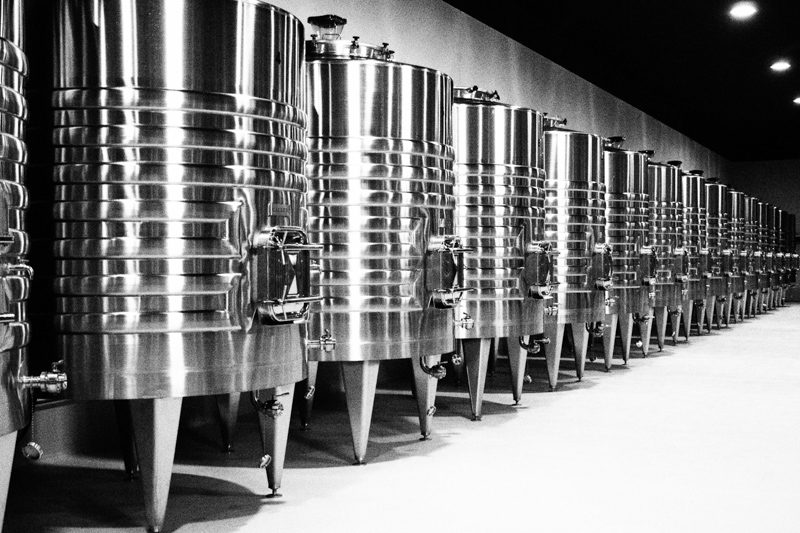I love the wine trade. It’s fun, full of interesting people, and it’s incredibly open and friendly.
But it is a bit of a bubble. We talk to each other all the time. We assume everyone is like us. And as a business, it’s not so sharp. It’s more like a group of hobbyists.
The chief problems: (1) we fail to understand the perspective of normal people, who like to drink wine, but have no special interest in it; and (2) we fail to segment the market, and assume that the rules that apply in the fine wine segment also apply further down the feeding chain.
The segmentation issue is a big one. Now, for a site like this, I am communicating in a way that – while I hope is accessible – is really for the converted. I don’t expect my friends, who like drinking wine but who are not wine geeks, to read this blog. Reading about wine is quite an abstract activity: we are using words to describe tastes and smells, and words are not very good at this.
You could criticize me for being elitist, but I am writing for my market segment, and my web stats show that there are enough wine nuts around to make this worthwhile (and I thank you for reading). Others try to popularise wine – a noble goal, indeed. The problem with this popularisation is that even though you are trying to broaden your readership, you actually end up writing for a very small constituency of readers. The sorts of people who drink £4 supermarket wines don’t want to read about wine. They just want a wine that tastes OK at a good price. I love communicating to wine newbies, but I find the best way to do this is to share the experience of wine with them.
Back to the bubble concept. I think the Champagne houses are the best at escaping the bubble. They have brands that have reasonable volume and which sell for enough that they have a proper marketing budget. With these marketing $$$ they are able to reach beyond the trade bubble, get brand recognition, and tell a story.
Wine brands find it trickier. One of the problems with wine is that there are just so many different brands. It is a highly distributed market, and a complex one. At one level, this complexity is the strength of wine. At another (in another segment of the market), it is a big problem for normal people who are utterly bemused by the diversity on offer. Also, my impression is that big Champagne brands are often better quality than equivalent big wine brands.
But in all these discussions, the golden rule is this: segment. There is not just one wine market. There is no such thing as ‘the’ consumer.
5 Comments on The wine trade bubble

This is where I reckon the “wine trade” (viz. all those crusty old MWs, regional wine merchants, sommeliers, restarateurs, old-skool wine writers) diverge from the wine industry. I enjoyed that BBC programme on Australian wine – “Chateau Chunder” – and your write-up on it. The advertising business, where I come from, is umbilically tethered to FMCG (fast-moving consumer goods) like soap powder and cornflakes. IMO the Aussies’ biggest stroke of genius was shifting their way of thinking about wine from the French esoteric, near religious view of an art form, to an added value product business. I agree that the champagne brands have always been good at marketing themselves: they understand the mindset that people when they are in the luxury goods economic space. But I think a lot of the big Aussie mainstream brands have achieved a similar salience in the market.
Hey Jamie – some great phrases on your blog of late. Especially “I think the Champagne houses are the best at escaping the bubble.” and the one from Olivier Krug, ‘It’s bullshit, and you can quote me on that.’
As for this post, I think you are bang on the money about the diversity of offering. There’s just so much out there that even if I like somebody’s wine, there’s a good chance I’ll only drink 2 or 3 bottles of it in my life. There’s just so much choice and new stuff coming out all the time. Even if you just focussed on one region, say the Barossa Valley or the Languedoc, it would be quite hard to keep up. And I also find that awards and medals and scores and so on for me are almost irrelevant, just because there’s so many of them. If a wine gets a gold at the IWSC but just a commended at the DWWA and a silver at the Royal Adelaide Show and 92 points, what does that mean? Probably worth trying for sure, but is it more worth trying than some wine from Pato, say, that I might chance across un-awarded in a shop, yet I am aware of as one of your favourite Portuguese producers………They’re both worth trying, of course, but as a consumer there is a limit to what my liver will take.
Lastly I see this word “precise” and “precision” creeping into your wine descriptions often, I don’t really know what it means.
I too agree about the “diversity of offering”. Many come into the store where I help out and usually head for 1) Argentina 2)Australia 3) Italy. When I point out the other choices available, some will be interested but many feel intimidated by the choice/s offered, and sometimes even the price/s.
Very well stated!
yes – they/we are definitely in a silo. On a humorous note, have you seen the mime? Shit Wine Snobs Say? http://youtu.be/JXuRkiV1Hsk
It is copied from the original and hilarious “Shit White Girls Say:”